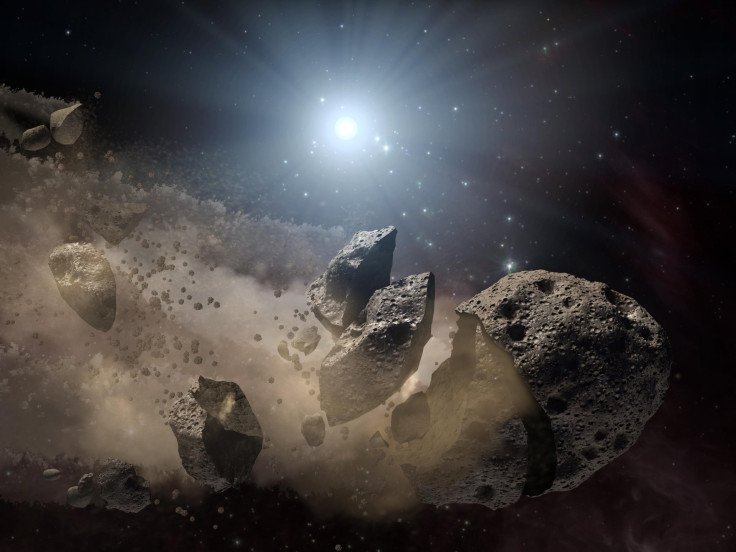Potentially Hazardous Gravity-Defying Asteroid Held Together By Unprecedented Forces: Study

A team of researchers has discovered that a near-Earth asteroid, included on NASA’s list of potential threats to Earth, is composed of loosely-connected debris held together by forces that have not been seen on an asteroid before. The discovery is expected to help scientists develop efforts to protect the planet from future collisions with asteroids.
The researchers examined the asteroid, 1950 DA, which spins so fast that it defies gravity. The asteroid rotates around every 2.1 hours, meaning that the rocks on its surface should be flung into space. But, the researchers found that 1950 DA has not disintegrated due to cohesive forces called “van der Waals” that act in an environment with little gravity. Although the presence of cohesive forces has been predicted in small asteroids, solid evidence has never been seen before.
“We found that 1950 DA is rotating faster than the breakup limit for its density,” said Ben Rozitis, a postdoctoral researcher at the University of Tennessee, Knoxville, said in a statement. “So if just gravity were holding this rubble pile together, as is generally assumed, it would fly apart. Therefore, interparticle cohesive forces must be holding it together.”

The 1950 DA, which is nearly a mile wide, rotates so fast that it experiences negative gravity at its equator. There is a 1-in-4,000 chance that the asteroid will hit Earth in 2880, Space.com reported, citing a 2003 study, which suggested that if 1950 DA crashes into the Atlantic Ocean, the blast could pack enough energy to trigger 200-foot-high tsunami waves.
“Following the February 2013 asteroid impact in Chelyabinsk, Russia, there is renewed interest in figuring out how to deal with the potential hazard of an asteroid impact,” Rozitis said. “Understanding what holds these asteroids together can inform strategies to guard against future impacts.”
According to the researchers, the study explains some potential techniques to weaken the cohesive forces keeping the asteroid together, but at the same time, prevent it from breaking apart into several deadly projectiles aimed at Earth.
“Therefore, with such an asteroid, you want to avoid interacting with it directly to prevent it breaking up. An alternative is to use a 'gravity tractor,' or a heavy spacecraft placed near the asteroid, which uses the force of gravity to pull the asteroid off course,” Space.com quoted Rozitis as saying.
© Copyright IBTimes 2024. All rights reserved.












